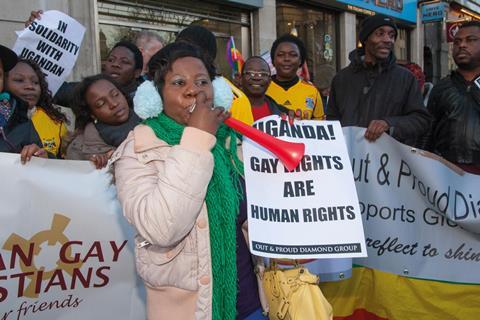Pride Month is a good time to reflect on how we have advanced LGBTQ+ people’s equality and human rights over many years. Naturally, there are no simple answers. Major social change is tough and complicated, involving a network of domestic, international, judicial, political, and socio-cultural reform. Among this network, public law – the law governing state power – has not been and will never be the only answer for LGBTQ+ equality.


But mechanisms such as judicial review, legislation such as the Equality Act 2010 and Human Rights Act 1998 (HRA), and international treaties such as the European Convention on Human Rights (ECHR) have been – and still are – part of the answer.
Judicial review allows people affected by state decisions to ask a court to assess the legality of those decisions, including whether they are compatible with the HRA.
One celebrated LGBTQ+ case is Ghaidan v Godin-Mendoza, decided in 2004. Under legislation at the time, when some tenants died their surviving partner could inherit their tenancy. Marriage was not essential. It covered anyone living with the tenant ‘as his or her wife or husband’ and the courts had decided that this protected stable relationships similar to marriage – but only heterosexual ones.
Juan Godin-Mendoza – whose long-term partner Hugh Wallwyn-James had died – used the HRA to argue that this violated Article 8 (the right to respect for private and family life) and Article 14 (the prohibition of discrimination). The UK’s highest court used section 3 of the HRA – which requires judges to interpret legislation to respect human rights as far as possible – to apply the legislation so that it also protected same-sex couples. Using the HRA, discriminatory legislation was made non-discriminatory.
Laura Hineson and Rachel Morgan are a same-sex couple who had been trying to conceive through artificial insemination at home for over a year.
Their NHS clinical commissioning group’s (CCG) policy said that heterosexual couples would be offered IVF treatment if they had been unsuccessfully trying to conceive for two years. But for same-sex couples, attempts at artificial insemination at home were ignored.
The couple challenged this policy. Their lawyers sent a pre-action protocol letter to the CCG arguing that the policy should be amended to provide equality between opposite-sex and same-sex couples. Specifically, they argued that the policy caused direct and indirect discrimination contrary to the Equality Act 2010 and breached their Article 8 and 14 rights.
The couple was successful. The CCG reviewed its decision and recognised that it had failed to look at the specific circumstances of the case. The couple were able to access IVF treatment. The CCG also agreed to review its policy so other same-sex couples would not face the same discrimination.
This case illustrates how public law can be used to advance LGBTQ+ rights in cooperation with public bodies. Public law does not have to be adversarial or expensive. Pre-action correspondence can prevent litigation by encouraging public bodies to engage with human rights legislation before a case even goes to court. This saves the taxpayer money and leads to positive outcomes not just for the claimants, but for the wider LGBTQ+ community.
Until 2000, the Ministry of Defence imposed a ban on gay and lesbian people serving in the army. This was based on the belief that homosexuality was ‘incompatible with service in the armed forces’.
When this ban was challenged in Smith v Ministry of Defence, the judges concluded that the ban was lawful. However, when the case was heard in the European Court of Human Rights, the judges concluded that the ban violated gay and lesbian people’s right to respect for their private life and was discriminatory. The MoD reversed its policy.
Thus, the ECHR has prompted the UK to respect LGBTQ+ people’s human rights when they otherwise would not have been.

The UK is one of the safest countries in the world to be LGBTQ+. But a country does not need to be homophobic or transphobic to discriminate. More often, discrimination from public bodies will concern failures to take account of the unique vulnerabilities or interests of LGBTQ+ people.
For example, the Illegal Migration Bill – which bans most refugees from claiming asylum in the UK – plans to create an asylum system which ignores the unique position of LGBTQ+ people. It establishes no specific safe routes for LGBTQ+ refugees fleeing, say, Uganda, where LGBTQ+ people now face state-sanctioned murder. It offers only eight days to appeal a removal decision, even though LGBTQ+ people may feel unable to reveal their homosexuality to a Home Office stranger in that short time. It allows removal to a list of countries where homosexuality is a criminal offence. And it is based on an Equality Impact Assessment and Human Rights Memorandum which do not even mention LGBTQ+ people despite the obvious risks.
Despite successes under multiple governments, the state will inevitably discriminate against LGBTQ+ people – and others. Law and government are imperfect. But they have been and remain part of the solution to discrimination as well. We should celebrate past successes achieved through judicial review, human rights legislation, and international law and continue to use these tools to secure a better future for LGBTQ+ people.
Lee Marsons is a senior researcher and Rachel Solomon a research assistant at Public Law Project






























